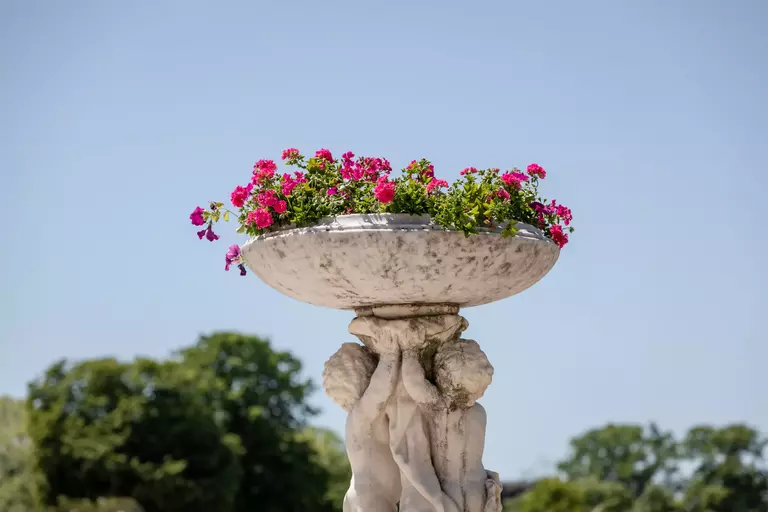A little bit of history...
When the Luxembourg Garden was assigned to the Senate in 1879, maintenance services were divided between the Ministry of Public Works and Fine Arts and the Prefecture of the Seine. The Presidency of the Senate had its own department for the Petit Luxembourg and the Presidency greenhouses. For reasons of convenience, the two departments were merged and the Conservation of the Luxembourg Garden was founded.
It is responsible for the upkeep of the public gardens, the decoration of the Palace's reception areas and the production of all bedding plants, green plants and flowering plants. The quality of the floral decorations and the upkeep is a testament to the skills of the gardening staff, who are recruited by competitive examination and have a century's worth of experience. The "Conservation des Jardins du Luxembourg" is also a horticultural establishment of sorts, producing more than 140,000 bedding plants and 7,500 flowering pots and green plants every year.
The plant collections in the greenhouses of the Luxembourg Garden have always enjoyed a certain reputation in horticultural circles. In 1919, they helped to reconstitute the collections of the Museum of Natural History and the National School of Horticulture in Versailles.


Plants from the Luxembourg and Museum greenhouses were also used to revive papyrus cultivation in Egypt. Today, the most interesting collection is undoubtedly the collection of tropical orchids, with over 400 species. Successive curators of the Jardin du Luxembourg have all been passionate about these plants, whose difficult propagation requires highly sophisticated equipment and techniques. The Luxembourg greenhouses are not open to the public. However, they are open every year on Heritage Days, and are visited by several thousand people. The Conservation des Jardins du Luxembourg also runs the Luxembourg School of Horticulture.
For over a century, the Luxembourg Gardens have been assigned to the Senate, which manages, supervises and conserves them. The Senate authorities have endeavoured to maintain the garden while respecting its personality. It is certainly no easy task to preserve the beauty and character of a garden that receives up to one hundred thousand visitors on certain summer days, and to exercise both attentive and discreet supervision over the almost 22 hectares open to the public. Thanks to their vigilance and the almost jealous affection of its regular visitors, the Luxembourg continues to bring together "the most beautiful flowers in the world in the most beautiful garden in the world" (Charles Péguy, Œuvres en Prose).